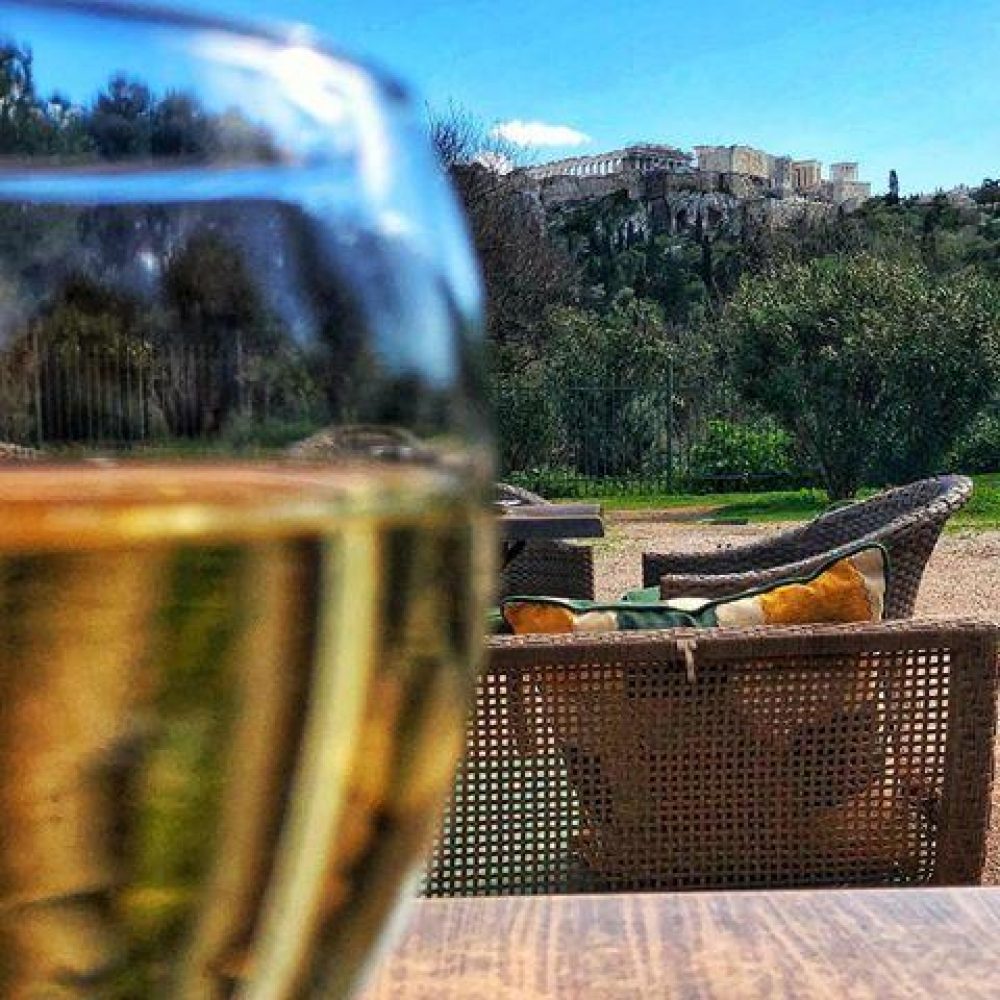In Athens, it's easy to surrender to your inner tourist. With the Acropolis perched high above the city, you ignore the impulse to head off the beaten track. Instead, you find a cafe at the base of the mountain, ease into a wicker chair and start first with a frothy freddo cappuccino—the iced espresso Greeks drink like water—then meander into a crisp white wine. All the while staring up at the ruins of centuries.
At least for the first day.
After that, you need to dive in. And Greece makes that easy. I'd come for five days to learn how Athenians really eat. And I was blown away by the simplicity and bold stroke flavors. Tons of feta cheese and olive oil, of course. The goddess Athena, after all, is credited with teaching the citizens how to grow and use the olive.
But it was the simple nuances that really struck me. Eggplant charred and smoky. Tender octopus topped by a massive tangle of fried—not stir-fried. not steamed. and certainly not wilted. but fried crisp!—arugula. Such a deliciously simple way to transform an ingredient so often treated as a green afterthought.

Most of my days began early. And they began at Stani, an old-school Greek dairy bar (but what we'd probably call a bakery/coffee shop). They are known for their Greek yogurt, a breakfast once exotic here, now painfully dull and ubiquitous. Not at Stani. Here, the yogurt is rich enough to be dessert, yet unsweetened. It's consistency is somewhere between custard and cheesecake, so firm it can be sliced. And you'd be a fool to order it without the requisite honey and walnuts.

In the afternoons, as a former PhD student in philosophy, I found it hard not to trace the footsteps of Aristotle and so many other great Greek thinkers. Of course, all that walking generally left me hungry, which brought me back to the city center and Varvakios Market. This crazy warren of stalls runs under, around and through several city blocks. It's hard to know where it begins and ends, fishmongers and butchers bleeding into spice and cheese shops, antiques vendors and junk shops. At night, there was a definite no-go vibe. But in the afternoon, it was all about the old ladies haggling. Lunch was often a bag of steaming hot pita breads, so soft they almost fell apart, paired with cheeses I couldn't begin to recall the names of.
To walk off the pita bread, it's best to work a circle around the base of the Acropolis. Most people don't know, but the word actually is a generic. There was an acropolis in almost every city, essentially meaning the fortified city center. But, of course, the Acropolis of Athens was the best known of them.
Follow the base of the mountain and you find all manner of hawkers, vendors and street performers. When I was there in February, the aroma of roasted chestnuts filled the air from small pushcarts.

And then you'd stumble across ruins and theaters, some of which still get used today. It made me realize I'd need to come back. Because the idea of hearing a concert—music variety irrelevant—in an original odeon is simply too romantic.

†But it was at night that the city really came alive. The tourists seemed to recede and the Athenians came out. Bars spilled onto sidewalks. The chestnuts—and now grilled corn—permeated the city smells. Dinner—the earliest served at 9 p.m., thank you so much—stretching well into the night. It was easy to love Athens.





